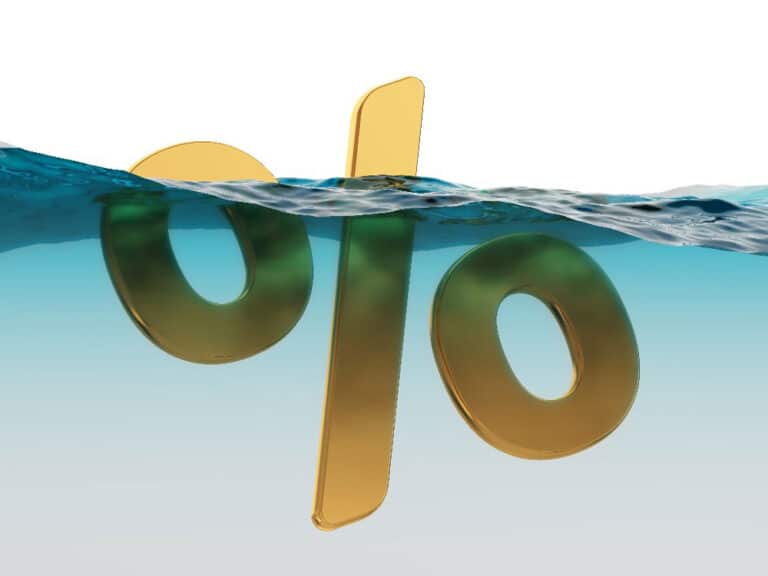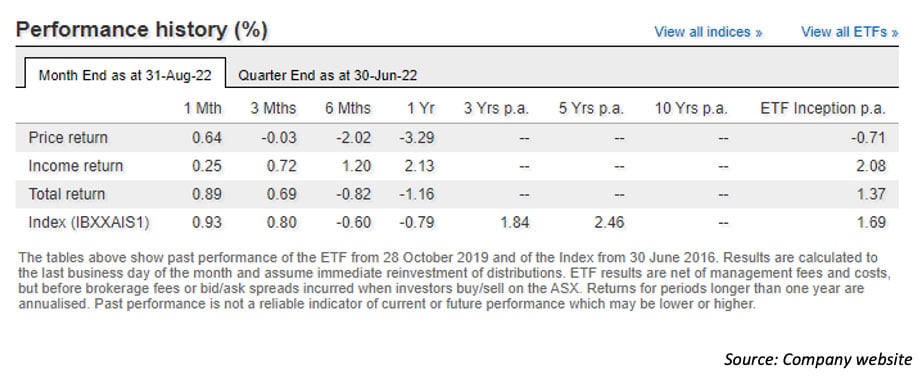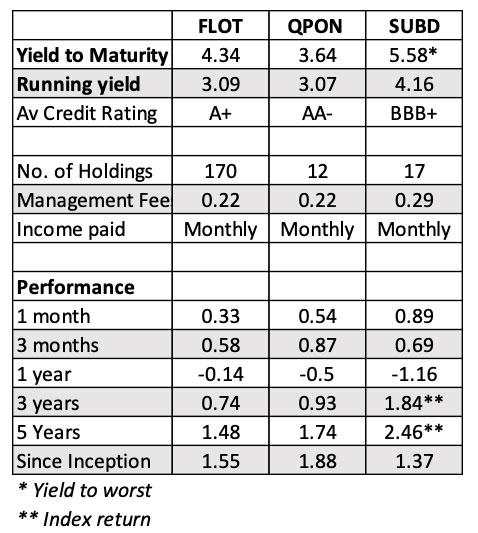
Central banks are signalling higher rates and while the market already prices in expected rate rises, investors are unsure when rate hikes will stop. Preference is being given to floating rate securities.
This article compares three floating rate ETFs.
Each of the three ETFs offers exposure to floating rate bonds, where income is revised quarterly and linked to the Bank Bill Swap Rate (BBSW). As the cash rate rises to combat inflation, BBSW rises as well providing investors with higher income.
All three have shown past poor returns but show reasonable future prospects in running yield and yield to maturity.
VanEck Australian Floating Rate ETF – (ASX:FLOT)
FLOT invests in investment grade, floating rate bonds and each security must have an investment grade credit rating from either S&P, Moody’s or Fitch and have a minimum outstanding value of $100m. Bonds must have at least one month to maturity.
FLOT aims to provide returns that closely track the Bloomberg AusBond Credit FRN 0+ Yr Index (BAFRN0).
The fund is concentrated, with more than 95% of investment in financial services bonds. While all the bonds are issued in Australian dollars, some of the companies are domiciled overseas. Australian companies dominate with 57.4% of securities, 11.5% from Canadian companies and 5.6% from Singapore-based companies.
Yield to maturity as at 16 September 2022, that is the expected yield if all the bonds are held to maturity is 4.34%. Remember that floating rate bond yields recalculate on each coupon payment date every 90 days, so this yield is not absolute, but projected.
Running yield, the expected yield if you buy and hold the bond for the next 12 months, is 3.09%.
Positively, the average maturity term in years is 2.01 years. Modified duration, which tells us exposure to interest rate risk, is very low at 0.14 years.
Key points to note:
- Inception date – 5 July 2017
- Net assets – $392m
- Number of holdings 172
- Management costs – 0.22%
- Average Credit rating A+
- Income frequency – Monthly
Betashares Australian Bank Senior Floating Rate Bond ETF – (ASX:QPON)
QPON differs from FLOT in its requirements to be included in the fund.
Eligible bonds must have at least $500m outstanding and a term to maturity of 1 to 5 years. Up to 80% of the portfolio is allocated to ‘big 4’ Australian banks (equal-weighted) and 20% of the portfolio allocated to other major Australian banks. Current eligible banks are classified into two bands:
- Band 1: ANZ Bank, Commonwealth Bank of Australia, National Australia Bank, Westpac
- Band 2: AMP Bank, Bank of Queensland, Bendigo & Adelaide Bank, Macquarie Bank, Members Equity Bank, Suncorp-Metway
QPON is very low risk and has a high AA- credit rating, in line with major bank senior bonds. It’s very high rating, better than FLOT, means we would expect lower yields. Yield to maturity is 3.64%, while running yield is 3.07% as at 16 September 2022. However, average maturity is more than double FLOTs at 4.09 years.
QPON is highly concentrated being 100% in Australian banks, tracks the Solactive Australian Bank Senior Floating Rate Bond Index and invests in just 12 securities.
Key points to note:
- Inception date – 1 June 2017
- Net assets – $577.3m
- Number of holdings 12
- Management costs – 0.22%
- Average Credit rating AA-
- Income frequency – Monthly
VanEck Australian Subordinated Debt ETF – (ASX:SUBD)
SUBD invests in higher risk, subordinated floating rate bonds, so has the most attractive yields. As at 16 September 2002, the running yield was 4.26% and yield to worst was 5.68%. Yield to worst is used for callable bonds where the issuer can repay investors on a range of dates. It assumes the bond is called at the worst possible time.
Like FLOT the fund is concentrated in the banking services sector and like QPON has a small number of holdings. However, 4.5% of holdings are domiciled in Singapore, giving the ETF some geographical diversification.
The average maturity is 7.85 years, much longer than FLOT and QPON, another reason investors would expect higher returns.
SUBD tracks the iBoxx AUD Investment Grade Subordinated Debt Mid Price Index. The index only includes AUD denominated floating rate bonds issued by financial institutions that qualify as Tier 2 Capital under APRA’s Rules (or equivalent foreign rules), and which hold an iBoxx credit rating of investment grade. These securities rank ahead of hybrids.
Key points to note:
- Inception date – 28 October 2019
- Net assets – $283.4m
- Number of holdings 17
- Management costs – 0.29%
- Average Credit rating BBB+
- Income frequency – Monthly
Comparison Table
Summary
Floating rate bonds can help protect your portfolio from inflation. Importantly, these three ETFs offer access to bonds that are not readily available to retail investors. There is no minimum amount to invest and any investor can buy the ETFs through the ASX.
Note: This article is for educational purposes only and none of the funds mentioned are recommendations.





































